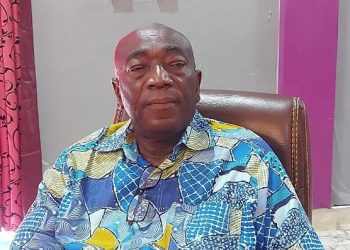To err is human is a truism and the medical profession is not an exception to this rule. Medical errors do happen and indeed are expected to happen because medical professionals are humans like the rest of us in society.
As a nation, Ghana has done quite well by investing resources in the training and capacity building of its health professionals through the establishment of medical schools and health training colleges and a post- graduate college of physicians and surgeons. The country has also made strides in expanding health infrastructure by establishing new health centers while expanding existing ones.
Unfortunately, the strides made in health infrastructure has not been matched by an equal commitment to matters of patient rights and patient safety. Provision of quality basic healthcare which is what the government seeks to achieve goes beyond infrastructure. It demands in addition, laws and thoughtful policies that safeguard and promote patient rights and patient safety.
A classic example of the vital missing links in our healthcare system as country is compensation for victims of medical errors/negligence. This is a burning issue that should have been resolved a long time ago in my estimation. Errors are bound to happen and are indeed happening in our various health centers. What becomes of the victims of the errors is a question we seem to be dodging as a nation. It’s high time our health system shifted from “what’s the matter with people” (social service healthcare) to the new paradigm “what matters to people.” (patient centered healthcare)
THE LAW IS A MEDUSA!
There is no statute regulating compensation for medical error/negligence victims in Ghana. Instead, the common law rule enunciated in Bolam v Friern and reiterated in Gyan v Ashanti GoldFields Corporation (a Court of Appeal decision) is the operating law, thus:
“a physician is not guilty of negligence if he has acted in accordance with a practice accepted as proper by a responsible body of medical men skilled in that particular art.”
Accordingly, to be entitled to compensation in Ghana, victims must necessarily succeed in establishing fault or causation between their injury and the conduct of the medical officers. This rule was affirmed in the recent case of Chinbuah & Nyamekye v Attorney General (37 Military Hospital case).
Admittedly, the Bolam rule remains good law except that it defers unduly to the medical profession. The rule in its strict sense accords little or no regard to patient rights. Originally, the decision in Bolam was perhaps an expedient one by the English bench to close the flood gates to medical claims to salvage the then nascent NHS from possible collapse. The need to prove fault was meant to serve as a major deterrence. Accordingly, strict application of the rule without qualification often leads to harsh outcomes for victims as it did happen in Gyan v Ashanti Goldfields Corporation.
Per the facts of the case, it is trite knowledge that a doctor is more skilled to judge a clinical situation better compared to a nurse. Therefore, a nurse failing to consult the doctor on duty before proceeding to administer an injection which turned out to be a wrong choice of treatment was prima facie negligent.
It is submitted that the dissenting opinion of Justice Ofori-Boateng accords with patient rights and correctly stated the law in the Gyan case, thus: “an experienced doctor or a person experienced in such matters can accurately guess which of these two diseases is causing the fever and so treat it accordingly.” The nurse was not sufficiently qualified without supervision to know polio from malaria and should have been found negligent.
Interestingly, the English who birthed the Bolam rule have since moved on. Bolam has ceased to apply stricto sensu. Instead, it applies subject to added qualifications (Bolam gloss) following the landmark case of Bolitho v City and Hackney Health Authority, thus:
“The court is not bound to hold that a defendant doctor escapes liability for negligent treatment or diagnosis just because he leads evidence from a number of medical experts who are genuinely of the opinion that the defendant’s treatment or diagnosis accorded with sound medical practice.”
Indeed, the Bolam rule was castigated in the landmark case of Montgomery v Lanarkshire by the UK Supreme Court and stripped off its application to patient consent (Sidaway v Bethlem Royal Hospital was accordingly overruled). Instead, the Court established a new standard of duty of care binding on medical officers i.e. the duty to warn patients of material risks. Material risks was interpreted by the court as risks that “a reasonable person in the patient’s position would be likely to attach significance or the doctor is or should reasonably be aware that the particular patient would be likely to attach significance.”
CONCLUSION
It remains to be seen what will eventually become of the remnants of the Bolam rule in the UK going forward. Society is dynamic and so should the law. The strict application of the Bolam rule as was in Gyan v Ashanti GoldFieds Corporation has inadvertently placed a big fetter on accessibility to compensation by victims of medical error/negligence in Ghana. In the result, the law has become a “Medusa” – an “evil” (floodgate) seeking to prevent a “bigger evil” (avalanche of claims).
THE WAY FORWARD?
Statutory interventions such as the Motor Vehicles (Third Party) Insurance Act, 1958 and the Workmen Compensation Act,1987 (PNDCL 187) provide practical examples worthy of emulation in the medical sector.
Firstly, the Motor Vehicles Insurance Act makes it mandatory for all vehicles to be covered for unlimited bodily injury and death compensation to third parties. Secondly, when an eventuality happens, victims i.e. fare-paying passenger or pedestrians get compensated by proof only of the fact of their injuries. Same applies to the Workmen Compensation Act. There is no additional legal burden on victims to establish fault (negligence) by their perpetrator in order to be compensated.
The Motor Insurance Act and Workmen Compensation Act both operate by the no-fault compensation principle and have worked very well in Ghana for many years. It is submitted that it is high time a similar system was established for the medical community in Ghana. All it takes is for a legislation to be passed making it mandatory for all health professionals to procure professional indemnity insurance as part of licensure requirement.
The beneficial outcome of such statutory intervention far outweighs the cost concerns often trumpeted in defense of the status quo. The cost of premium per head for professional indemnity insurance would not differ much relative to cost of third party motor insurance which all motoring Ghanaians including health workers already pay without qualms. It’s also possible to split the cost of premium between the health worker and employer just as is done for social security payment. Whatever it will take, victim compensation is worth doing. The alternative is simply tragic.
Imagine waking up to the news that victims of medical errors/negligence are guaranteed compensation. What a dream come true that will be for most patients!
BY ISAAC OFORI GYEABOUR ESQ,
Associate @Koffie & Partners (Law Conclave), Kumasi-Ghana
President & Founder @ Patient Rights Watch Ghana.
Email: ofori.gyeabour@gmail.com


![Medical victims’ compensation ‘wahala’: The role of the law [ARTICLE]](https://sikamantimes.com/wp-content/uploads/2024/06/PRW1006-e1718006394710-525x375.jpg)


![Journalists smiled, KGL won: my SITE PR evaluation model of the 29th GJA/KGL awards [OPINION]](https://sikamantimes.com/wp-content/uploads/2025/11/SkobaComms-350x250.png)


![From Protest to Power: Political Aggression and the Ethics of Civil Disobedience in Modern Democracies [FEATURE]](https://sikamantimes.com/wp-content/uploads/2025/11/Kwame-Nkrumahs-Ghana-From-Promise-to-Betrayal-img-350x250.jpg)







